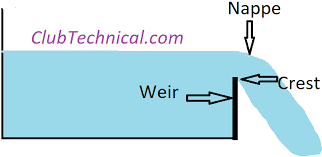River Restoration
What is River Restoration?
River restoration is the process of managing rivers to reinstate natural processes to restore biodiversity, providing benefits to both people and wildlife. Reintroducing natural processes can reshape rivers to provide the diversity of habitats required for a healthy river ecosystem and ensure their long-term recovery by addressing the root cause of the issue.
Some rivers have been extensively modified to accommodate societal needs for food production, flood protection and economic activity so it is not always possible or desirable to restore to a pristine condition. In this case, improvement of river structure and habitats within the adjacent constraints can increase overall biodiversity and mitigate some issues.
“River restoration is the re-establishment of natural physical processes (e.g. variation of flow and sediment movement), features (e.g. sediment sizes and river shape) and physical habitats of a river system (including submerged, bank and floodplain areas).”
Why is river restoration important?
The fact that most towns and cities developed near rivers illustrates their importance to humans. Naturally functioning rivers and floodplains provide ample benefits to society including flood regulation, freshwater supply, tourism/recreation, water purification, carbon storage and improved human health. Many of these benefits, along with biodiversity and habitat, are compromised if rivers are modified.
River restoration projects encourage local communities to engage in their local environment, raising awareness of environmental issues. To ensure local communities benefit as much as possible from river restoration projects, it is important to involve all interested organisations and individuals from the outset.
How are rivers restored?
Deciding the appropriate river restoration technique to use is dependent on river type, modification extent and adjacent restrictions
Managing catchments
Ideally, to deliver multiple benefits to society and wildlife (Figure 2), river restoration should be considered at catchment scale and prioritised as part of wider catchment plans. The Catchment-Based Approach is a community-led approach that engages individuals and organisations from across society to improve freshwater environments. Catchment management groups are the best place to identify issues and agree restoration priorities. This approach will produce the most beneficial results as the river system can be viewed as a whole - focusing on a specific reach, without a wider catchment understanding, can lead to detrimental effects elsewhere.
Restoring a more natural river course
River straightening, diverting and over-deepening has been common practice in the past, to create space for land development, enhance river navigation, improve land drainage and reduce flooding. Straightened channels generally lack flow and habitat diversity as their profile has been extensively modified and their features have been removed. Straightening can increase the risk of flooding downstream as water moves faster through the modified section and increases discharge downstream. Remeandering reinstates a more natural course and river profile with the aim of improving habitat diversity and biodiversity. Flow can be returned to the former river course (Figure 3) or an entirely new course can be constructed if the old channel cannot be identified or is not accessible.
Floodplain reconnection and wetland creation
Floodplains are an important aspect of a riverine environment, providing flood storage, fish refuge and habitat diversity but often they have been disconnected and drained to protect housing from flooding and create land for agriculture or development. This disconnection and reduction in storage may cause a greater flood risk downstream as water moves through a catchment quicker. To restore connectivity, flood banks can be breached or set back in carefully chosen locations, allowing water to spill out onto the floodplain again. Benefits of reconnecting the floodplain include an increase in flood storage area, recreation of wetland habitat (Figure 4), reintroduction of wetland species and creating refuge for fish during high flows.
In-stream enhancement
If floodplains have been reclaimed and developed, which is the case in most urban areas, it is often not feasible to make space for large-scale river restoration. If the river has concrete banks or bed, which is again often the case in urban areas, reinstating some natural processes within the river channel can be the next best option. There are many novel in-stream enhancement techniques to consider (Section 3 of the RRC Manual of Techniques) but most involve introducing some form of roughness in-channel, such as woody material, reworking gravels or creating berms (Figure 5) to create flow diversity, new habitats and areas of refuge. This form of restoration can provide a great opportunity to get local communities involved as it usually requires a hands-on approach.
Removing or passing barriers
Barriers such as weirs and dams are common features of the riverine landscape. Barriers can restrict the passage of wildlife along a river, and alter river habitats by creating deeper and slower flows directly upstream. They also prevent transportation of sediment, which may lead to downstream erosion problems and increased maintenance costs. Where a barrier is no longer used for its initial purpose, there is a case for complete removal which would restore upstream and downstream connectivity. Where complete removal is not possible, other measures can provide some benefits, such as lowering weirs or creating bypass channels with fish passes (Figure 6).








Comments
Post a Comment